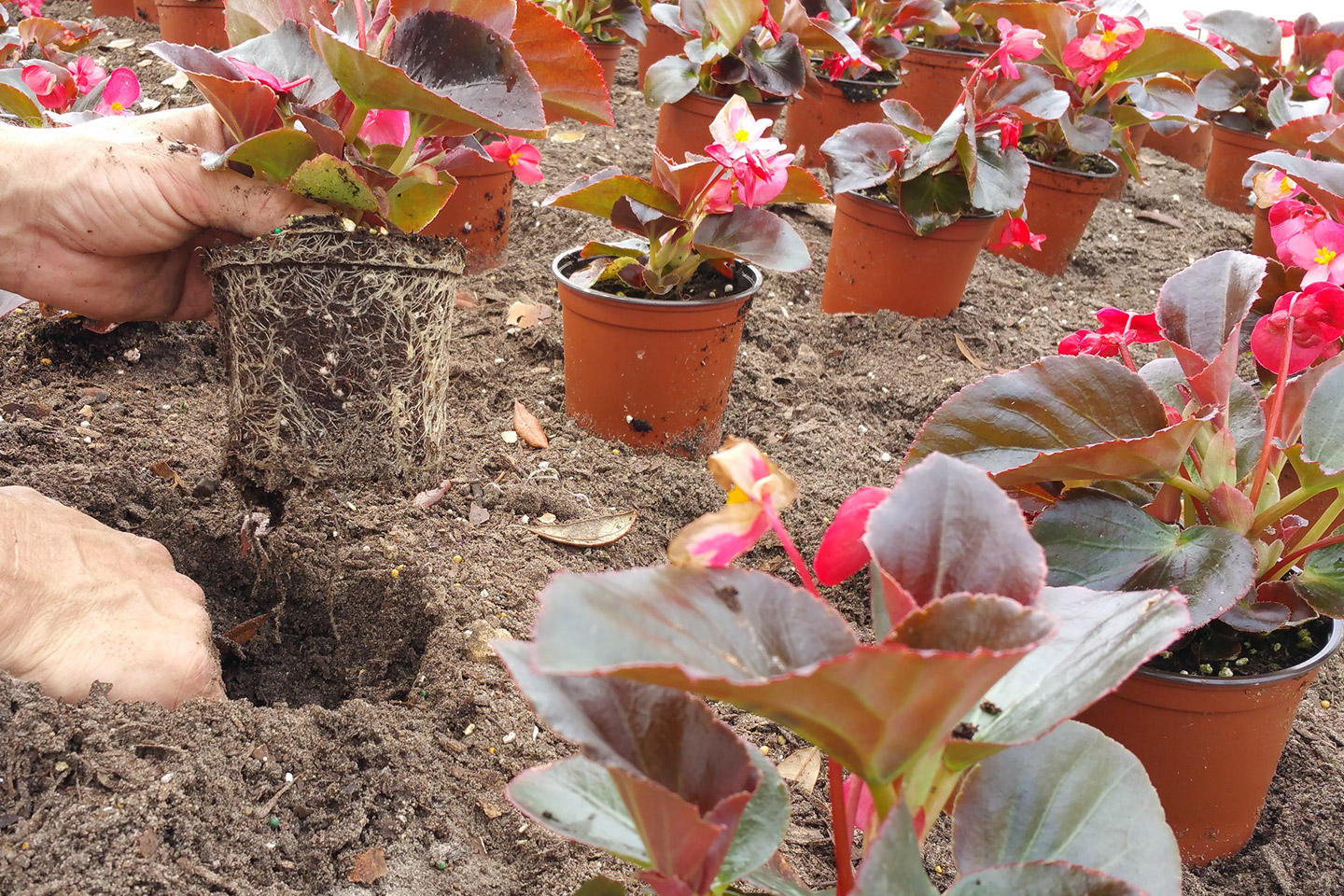10 High Maintenance Plants in Your Community - Sit Down with CEPRA
One of the most often-requested must-haves from communities during their landscape renovations are "low maintenance plants." However, even the most natural-looking landscapes require dedicated time to ensure its beauty. While there are certainly some plant species that are easier to tend to than others, sometimes even the "easy" plants require more attention than anticipated. Below, we cover 10 of the most high-maintenance plants found in communities, and the reasons for their entry here.
1. Annuals
Annuals offer a fantastic pop of color. As many know, this color-enhanced effect comes at a price. Annuals are the highest priced plant per square foot. They require specific nutrient fertilization, irrigation, and weed management. Deadheading and pest control is dependent upon the species chosen. Even more, they are placed in high-profile areas of the community, and require additional monitoring to ensure they look their best. Even with the enhanced attention, annuals are notoriously short-lived. Annuals require frequent replacement and seasonal rotations to keep an area looking beautiful.
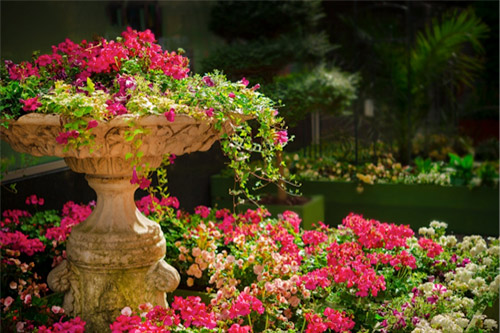
2. Viburnum Species - Awabuki, Suspensum, Odoratissium
The viburnum hedge offers an excellent privacy screen and neat-appearing hedge to round out the landscape. However, if left unchecked, their rapid growth pace allows them to exceed daunting heights. Some are known to exceed 15 feet in height, which puts them out of the bounds of general landscape maintenance, and may require a hydraulic lift to prune. Viburnums require routine attention with pruning or the use of growth regulators to ensure their size stays manageable. They are susceptible to mildew disease and pests, such as thrips, which will cause the plant to defoliate and reduce its privacy-screening capabilities. Their watering must be closely managed to ensure their purpose in the landscape is protected.
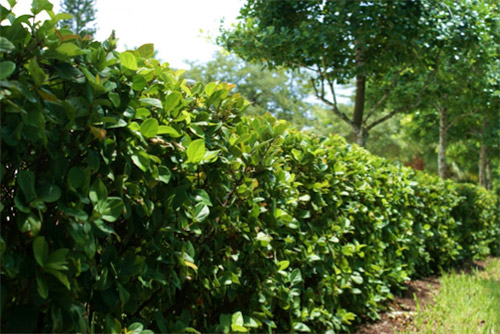
3. Non-Native Palms - Especially Dates, Royals, and Arecas
Any non-native palm tree will require additional maintenance to ensure its success in the landscape. This includes specific fertilization and pest management throughout the year. Date palms have specific diseases that will decimate the plant, such as lethal bronzing, and are recommended quarterly OTC injections to protect the palm. Royal palms are lauded for being self-cleaning, however these fronds are large and drop on their own schedule - which often means obstructing roadways and walkways. Areca palms are selected for their clumping growth habit, which offers a dense coverage that is ideal for privacy. However, they can take over an area and reduce accessibility. This palm is especially common along pool screens between homes, and their growth can damage the screens. Thinning them out to not damage property is recommended, however, this significantly reduces privacy-screening.

4. Bougainvillea
Bougainvilleas offer a gorgeous pop of perennial color to the landscape. However, the plant is a rapid grower that flowers on new growth - which means it will require special pruning to keep its size compact. This offers a unique challenge, as bougainvilleas are incredibly thorny, and must be carefully managed to prevent injury. As is the case for most flowering plants, bougainvilleas need special fertilization to ensure its color stays vibrant.

5. Hibiscus Standard
The standard version of the hibiscus often appears as a "lollipop" tree, meaning it has a round canopy of foliage atop a thin trunk. Being top heavy, this tree will always require staking, as wind will easily knock it over. Pests can be an issue, such as the Pink Hibiscus mealybug. This is another plant on our list that flowers on new growth, so consistent pruning will be needed to remove the dead flowers. This may be difficult to reach if the plant is in the wrong location in the landscape, so keep in mind its surroundings when planting.

6. Firebush
The firebush shrub offers a delicate red flower with coarse-textured leaves. This fast-growing shrub also flowers on new growth. When placed in tight locations, significant pruning will be needed to ensure its compact size. The constant pruning that is needed significantly reduces the plants ability to flower. Proactive pest control is needed to manage Thrips and Aphids. This is an excellent plant to attract pollinators, and looks beautiful when allowed to grow to its natural size.
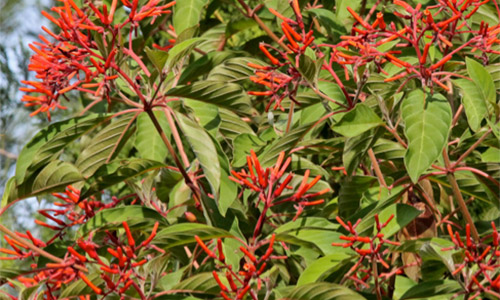
7. Plumbago
Plumbagos offer a medium-textured leaf with a beautiful, soft-blue flower. Like the Firebush, this plant needs room to grow to reach its flowering potential. This is a great plant for pollinators. Plumbagos should be completely rejuvenated at least twice a year for maximum sustainability in the landscape.

8. Italian Cypress
Those tall, majestic trees offer an elegant addition to the landscape. However, this species suffers from being popular among pests and diseases. Mites, Cankers, Blights and Root diseases are typically prevalent. It is not uncommon for entire Italian Cypress populations to be wiped out due to disease. Our windy state makes staking a requirement; however, it must be managed to prevent girdling. An arid-loving plant place in our humid and rainy habitat tends to be a recipe for a short lived life.
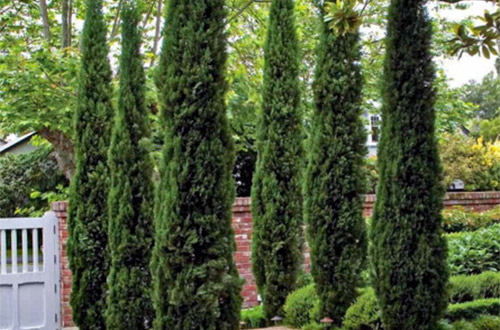
9. Jasmine Species - Confederate, Asiatic, Star, and Downey
Jasmine is an excellent groundcover, and offers a sweet-smelling flower in the spring. Unlike some of the other plants on our list, the species is featured here because they often grow too well. This aggressive growth habit can easily take over a space if left unchecked. Growth regulators (PGRs) are often used to maintain a consistent appearance in the landscape.
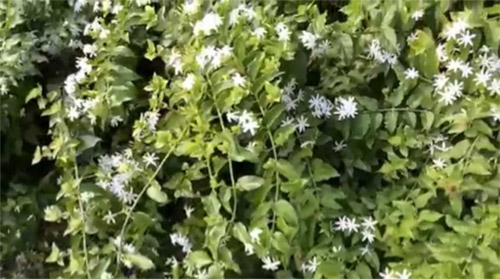
10. Ornamental Grasses
Ornamental grasses offer a beautiful cascading, fountain-like texture to the landscape. They earned a spot on our list because they require a detailed rejuvenation pruning at least once a year. This pruning accrues a significant amount of yard waste - who would've thought such fine, delicate strands could occupy so much space? Additionally, several species of ornamental grasses are affected by scale and mealybug pests. They are also sensitive to irrigation abnormalities, and can develop crown and root rot disease if the irrigation management is poor.
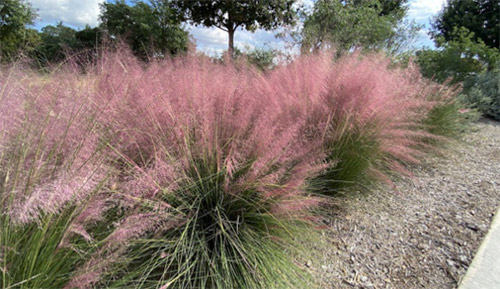
Conclusion
Many people consider the maintenance level of plants to be subjective, as we all have different thresholds of how much work we are willing to commit to our plants. Remember, the most important rule to abide by is, "Right Plant, Right Place." This ensures that your plants have the best opportunity to thrive in the landscape, and look beautiful for years to come.
